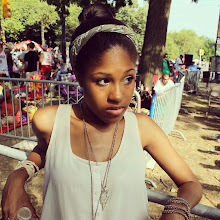The motif of “rags to riches through magic and marriage” is
one that we see in the fairy tale Cinderella. Because of this motif, Cinderella
is considered to be a “rise tale.” In this fairy tale, Cinderella goes from
being a very poor servant girl under the control of her stepmother to marrying
a prince. Although we see this type of motif a lot in fairy tales, for it to
happen in real life is very unrealistic. It is not often that you see someone
as poor as Cinderella was marrying someone as wealthy as the prince was. The
only modern day example I can think of that could be considered a “rags to
riches” tale would be the marriage of Prince William and Kate Middleton. In
England, Kate was considered to be a peasant. Although she may not have been very
wealthy, she ended up marrying a prince and having her own Fairy Tale wedding.
Even though things like this happen sometimes, we don’t hear about it very
often. In my opinion, the “rags to riches” motif gives girls false hopes. We
read these tails and we think about how someday we will find our Prince
Charming, marry him, and become wealthy. But because this rarely ever happens
in our society, most of the times girls get their hopes up for nothing. The
only way we will be able to have a life like the one that Cinderella married
into is by luck or magic. Magic does not exist, and luck is usually not on your
side; unless you are Kate Middleton of course!
Sunday, September 23, 2012
Sunday, September 16, 2012
Grimm vs. MGM
Although the Grimm version of
Hansel and Gretel and the MGM version are very similar, they have a number of
differences as well. In the Grimm version, it is the children’s stepmother that
sends the children into the forest whereas in the movie it is the biological mother.
Another difference is the way the children end up in the woods in the first
place. In the story, the stepmother wants to send the children into the woods
so that there will be enough food for her to eat. In the movie, the children
accidently let the donkey into the house. The donkey eats the custard off of
the table and breaks the container of milk. When the mother returns and sees
what happens, she sends the children off to find berries. While trying to find
berries, the children wander into the woods. Also, in both versions, Hansel
leaves a trail to follows so that later they will be able to find their way
home. One other difference is the trail that Hansel leaves so that they can
follow it back home. In the story, Hansel uses this method on two occasions.
The first time he uses stones and the second time he uses pieces of bread. In
the movie, Hansel only uses the method one time. When he does, instead of bread
he uses the cookie crumbs that the baker gave to Gretel.
Like I mentioned before, there are
some similarities between the Grimm version and the MGM version. In both
versions, the children stumble upon a gingerbread house. Inside the gingerbread
house there is a witch that cannot see very well, but has a very keen sense of
smell. In each story, the witch puts Hansel in a cage because she wants to
fatten him up to eat him. She also makes Gretel her slave. In the end, though,
the children outsmart the witch and she ends up cooking in an oven.
In my opinion, the movie was better that the story. I liked the movie better because although the mother was really mean to Hansel and Gretel, there were still moments when you saw that she really cared. When reading the story, I felt like the mother didn’t care about her children at all. I also liked how in the movie, the first nigh the children stay at the gingerbread house, the witch is reading them the story of Briar Rose. I thought it was really cool how they incorporated the Grimm tales into the movie.
Sunday, September 9, 2012
Fairy Tales...
Over the years, there has been much debate over what exactly
a fairy tale is and should consist of. According to Zipes, fairy tales are “Narratives
of magic and fantasy, which are understood to be fictional.” According to Stith Thompson, a fairy tale is
a “tale of some length involving a succession of motifs or episodes” and that
they are “filled with the marvelous.” There are so many things that come into
play when defining fairy tales. One important aspect of fairy tales is “Zeitgeist,”
which is the spirit of the times. Most fairy tales contained things that may
have been acceptable back then, but seem kind of unacceptable now. Another
important thing is the style of fairy tales. They are usually told in few
well-chosen words that just describes the series of events. They also have a
preference for action instead of long descriptions. Fairy tales also have a
hero versus villain plot line. Like we saw in the story “Briar Rose” or “Sleeping
Beauty” the 13th witch and maleficent were portrayed as the villain.
Their main goal was to wreak havoc. The
prince was portrayed as the hero because in both Briar Rose and Sleeping Beauty
he saves the princess. Fairy tales also contain the aspect of magic. In these
stories we see witches, warlocks, fairies, goblins, dragons, and other magical
and mystical beings. Lastly, fairy tales almost always have a moral. Morals
teach lessons and also are very closely linked with the children that usually
read fairy tales. Morals teach children how to overcome obstacles and they also
present situations that are easy to relate to.
Subscribe to:
Posts (Atom)



